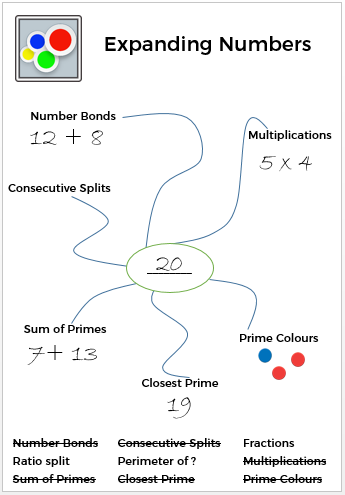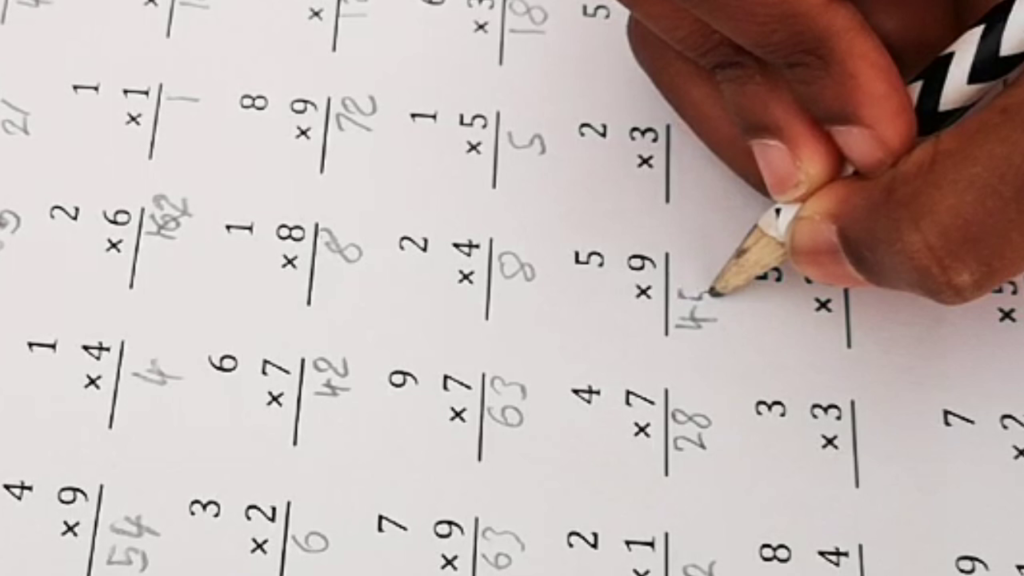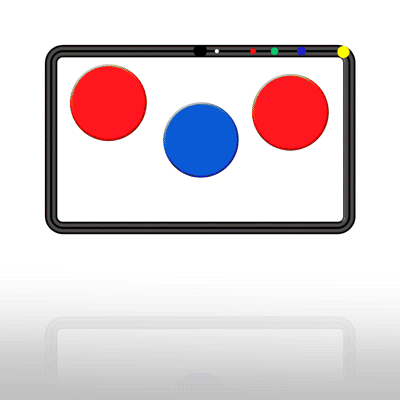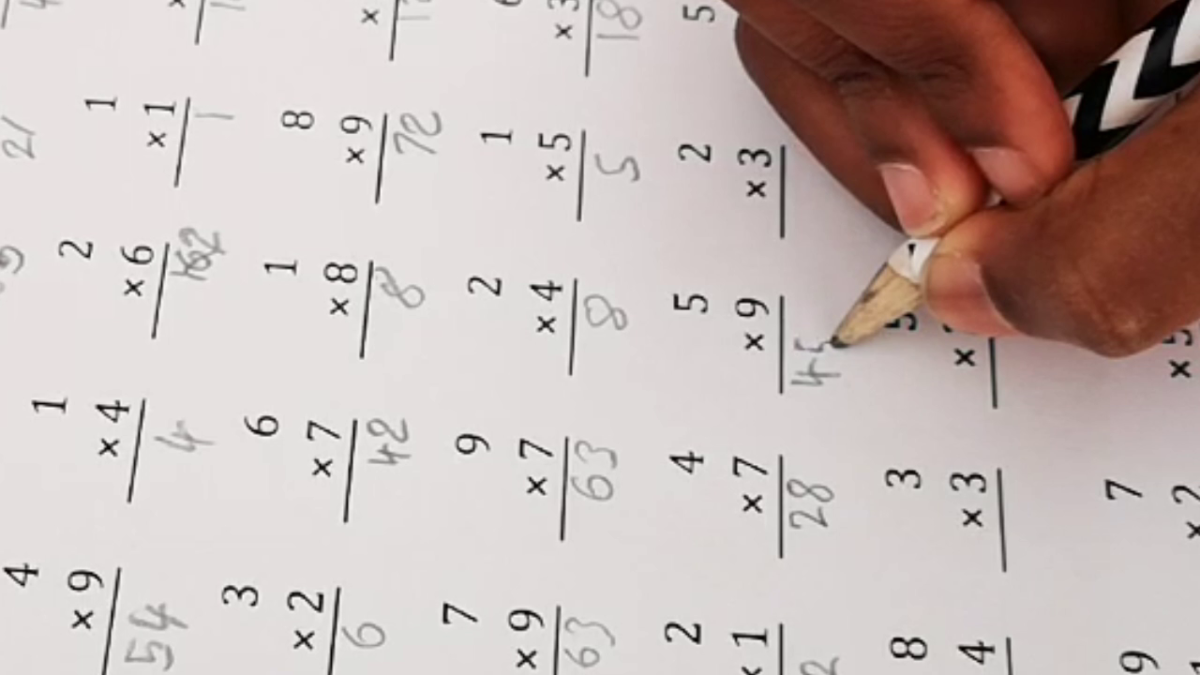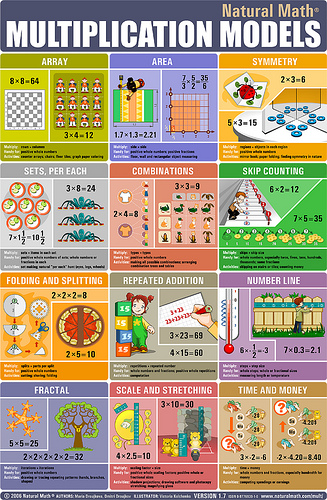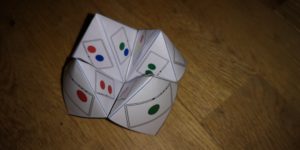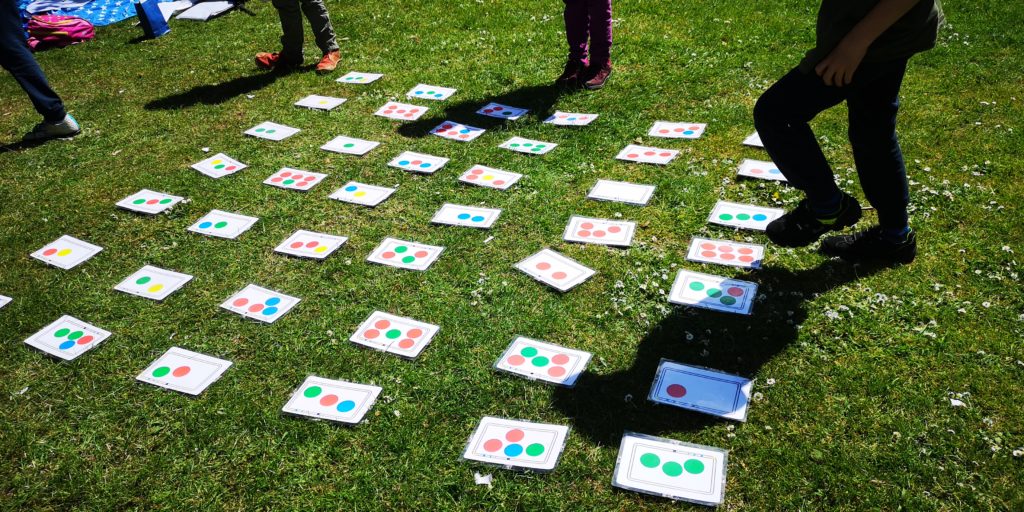
Here’s a game we’ve adapted slightly for the park. We used large Prime Colours cards which we printed out and laminated for this. I guess you could use a normal pack too. Or make your own pack.
We laid the cards out in a grid with just one of each card included. Players stood around the grid, ready to jump in.
To start playing someone chooses a target card and takes it out of the grid showing everyone the number. Then all the players had to choose a different card (by jumping on it of course) and the player who gets closest to the target number wins the card.
We kept going until everyone had won at least 1 card but of course you can make it more competitive. This can of course be played inside on a table too using playing pieces instead of jumping on the cards but…
The goal of the game is to help children remember the cards and in turn their multiplication facts. Some children will remember a few cards others will need to work them out. Whichever tactic they use, it’s all good practice.
This was a great activity, but it reminded me of a conversation I had with an outdoor learning specialist that, basically, this is an indoor concept that has been brought outside. It got me thinking of a version of prime colours that used outdoor concepts such as perhaps earth, stones and flowers. Still working on that idea…
